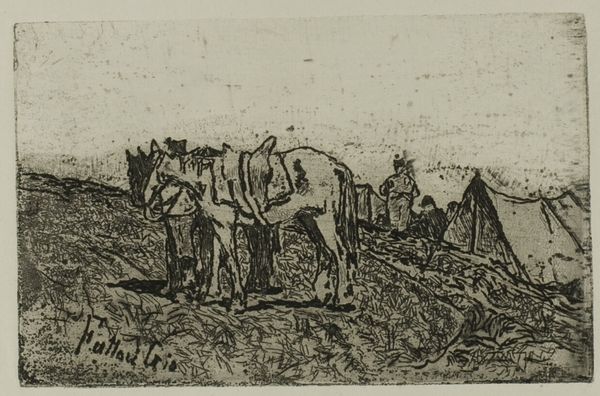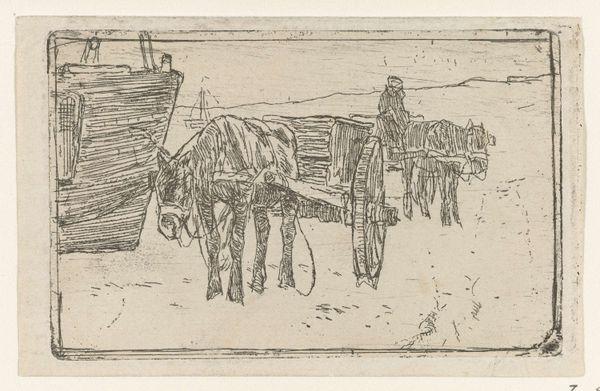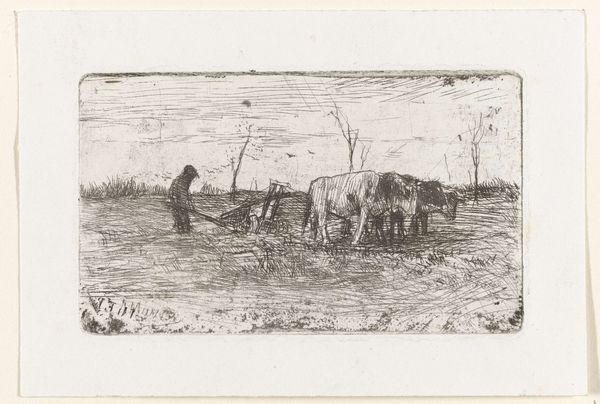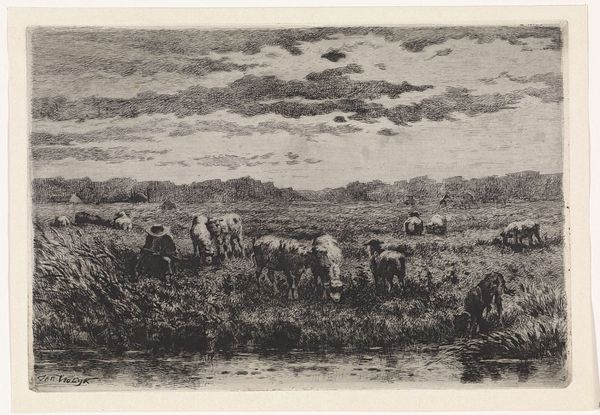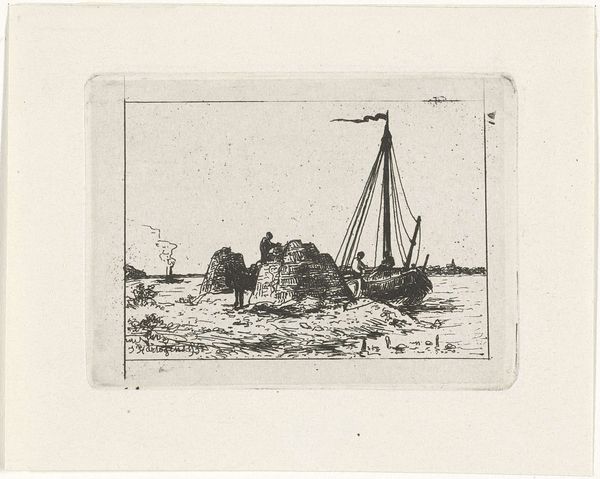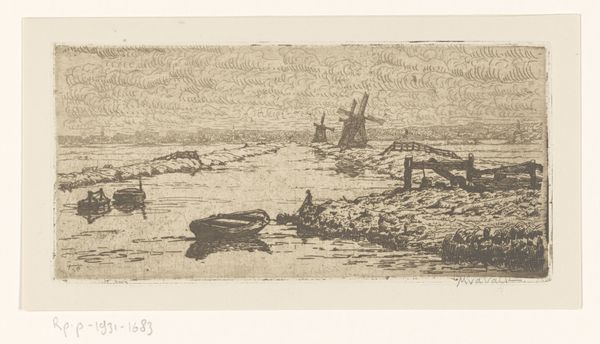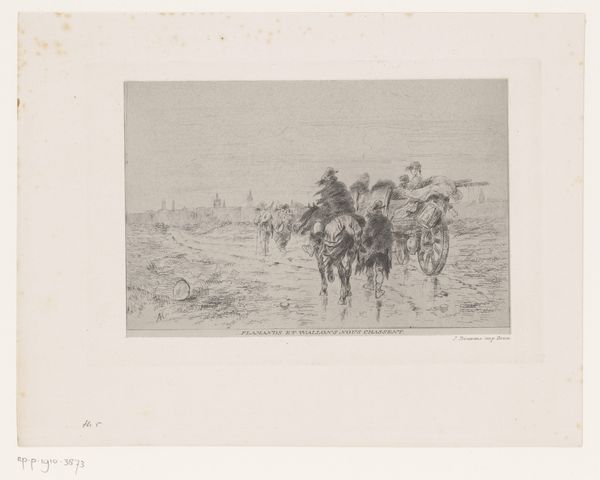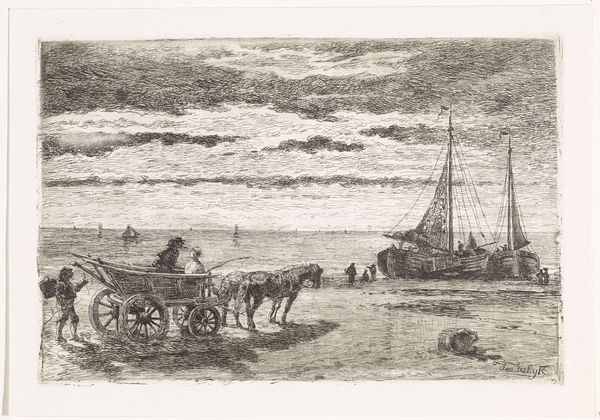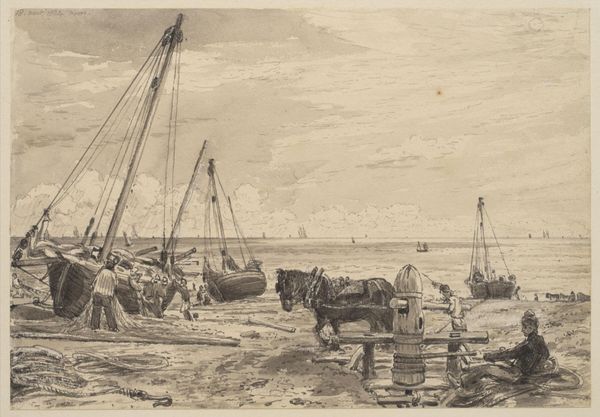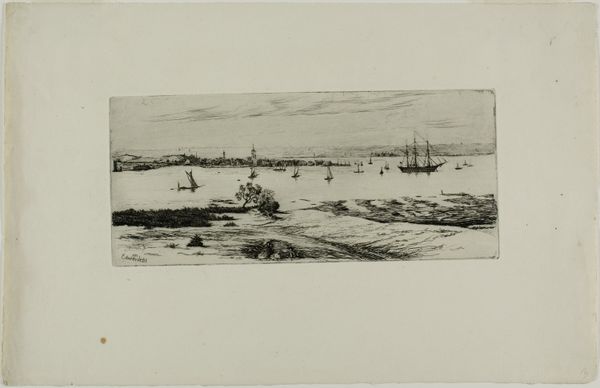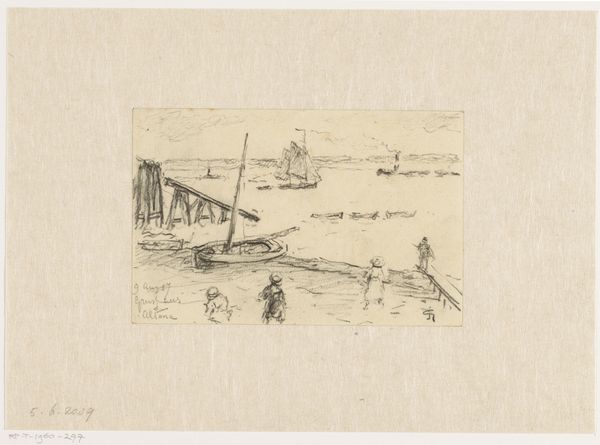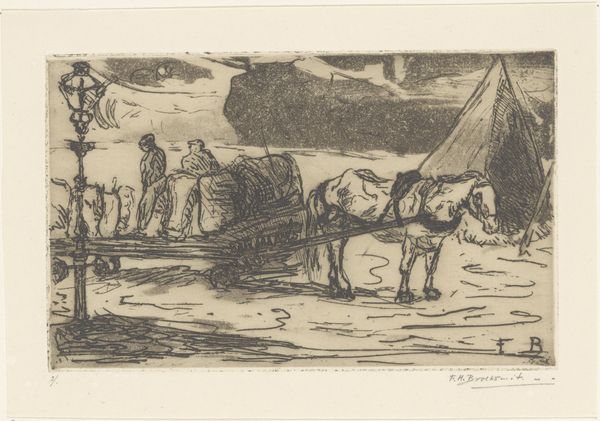
Dimensions: height 65 mm, width 102 mm
Copyright: Rijks Museum: Open Domain
Curator: Well, let's begin with Anton Mauve's etching "Wagens op het strand," created sometime between 1848 and 1885. It depicts carts on a beach. Editor: It’s somber. The muted tones convey a certain heaviness. You can almost feel the dampness in the air and the grit of the sand underfoot, which highlights an agricultural feel due to the lack of advanced materials for industrial transport in that era. Curator: Absolutely. Mauve was part of the Hague School, a group of Dutch artists who emphasized realism and natural light. This work echoes their focus on everyday life and the Dutch landscape, highlighting the shift from idealized landscapes towards capturing social context. Editor: How do the available materials impact the artwork’s themes? What is its purpose given that paper limitations mean the medium could only achieve so much detail? Curator: That's a key point. As an etching made using ink, the texture here seems particularly important to its emotional resonance. There are implications concerning material availability versus the message the artwork wishes to create. This would indicate that available tools limit the ability to reproduce perfect representation; however, artists are more inclined to produce works for thematic reasons rather than strictly aesthetic ends. Editor: Do you feel Mauve's decision to depict working-class individuals in this way democratizes art, bringing it to a wider audience and giving agency to those depicted within this social class? Curator: It does seem to grant them a certain quiet dignity. But it’s also vital to recognize the socio-political forces shaping the market for art and thus, what stories are chosen. Consider where these images would likely circulate—were these intended to instigate real social change, or merely cater to bourgeois sensibilities concerning depictions of “the everyday”? Editor: This raises questions about the intended purpose and reception. How would viewers then have interpreted this depiction of labor and the connection between individuals and the raw elements needed for life? The art forces us to analyze our consumption with those material considerations. Curator: Perhaps as a comforting confirmation of a rural past that allowed industrial viewers to be soothed that simple ways still remained. Thanks to institutions like the Rijksmuseum, pieces like "Wagens op het strand" are well-preserved. Editor: Indeed, we appreciate what Mauve sought to show—both its thematic relevance and inherent material implications for that period!
Comments
No comments
Be the first to comment and join the conversation on the ultimate creative platform.
